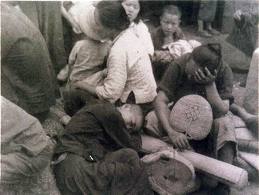Strangers at the Gate
- By Peter Harmsen
- 24 July, 2016
- 1 Comment
 Scenes of despair unfolded as the Japanese army moved in on Shanghai in late 1937, spreading terror among the city’s three million civilians. Tens of thousands were thronging at the narrow gates leading into the international parts of Shanghai, which had been left almost untouched by the hostilities. Very few gained entry, but were beaten and whipped with sometimes extreme brutality, meted out in an almost casual manner by the foreign guards.
Scenes of despair unfolded as the Japanese army moved in on Shanghai in late 1937, spreading terror among the city’s three million civilians. Tens of thousands were thronging at the narrow gates leading into the international parts of Shanghai, which had been left almost untouched by the hostilities. Very few gained entry, but were beaten and whipped with sometimes extreme brutality, meted out in an almost casual manner by the foreign guards.
Cameramen were eagerly recording the drama as it evolved, but their products often say as much about themselves and their prejudices about exotic Asia as they say about the people they filmed. This footage is a case in point.
Many of the scenes are exactly as one would expect. Homeless farmers drive their only asset, live pigs, in front of them. A group of baton-armed guards, one of them flashing a broad smile, drag an unfortunate would-be refugee to an uncertain future at the hands of the Japanese. Loafs of bread are thrown to a starving crowd, some trying to catch the flying pieces of food with their hats or even with open umbrellas.
But it is clear that the cameraman deliberately goes after what is strange and unfamiliar to his western audience. He zooms in on a chopstick-wielding child with “open-crotch pants”, a common alternative to diapers in China, but eliciting everything from curiosity to disgust among westerners. And his camera dwells just a little too long on the cripple struggling crab-like to escape to safety, to the point where pity turns into voyeurism bordering on Schadenfreude.



 Copyright © 2025
Copyright © 2025
I think we need a little less criticism of the cameramen, and a little more criticism of the Japanese.